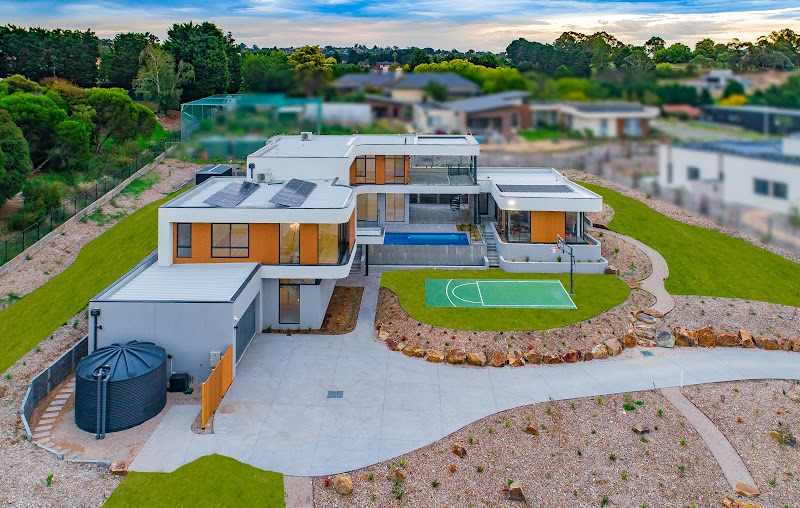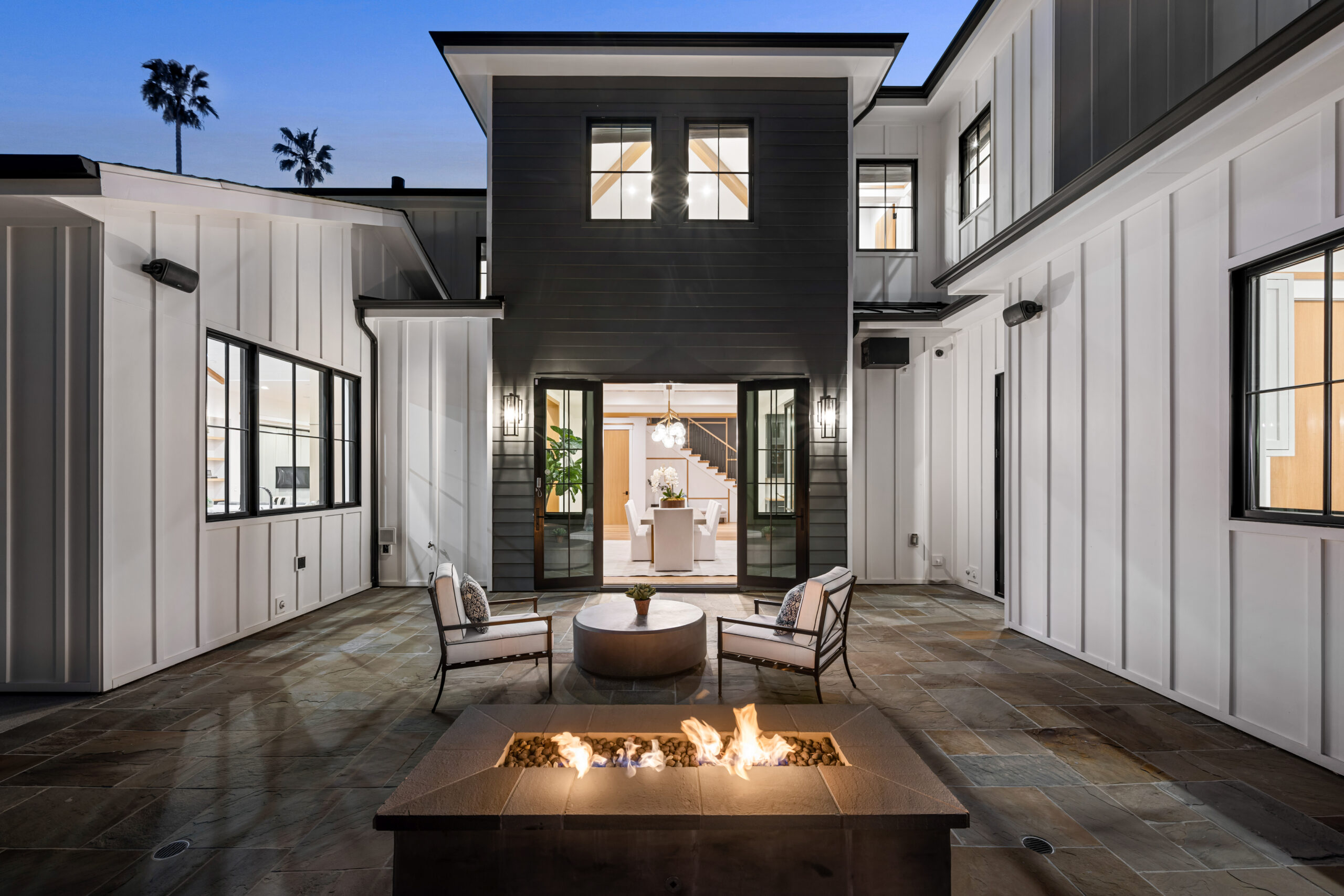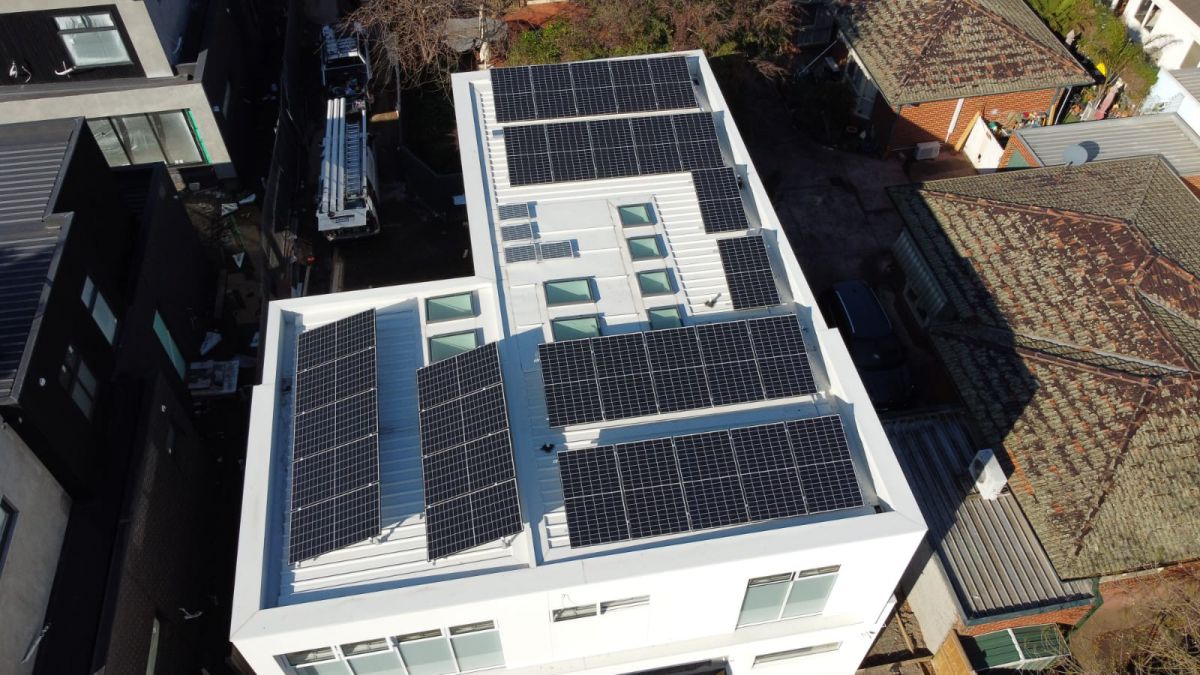Australia’s diverse climate and architectural styles necessitate a variety of roof designs. While it’s common for most people to picture a triangle when thinking of roofs, did you know that there are more than 10 different roof types for homes?
From Gable to Hip and Saltbox – what’s the difference and how should one choose the right roof? There is certainly much to consider when it comes to making the right choice, from the various benefits and disadvantages, to functionality, durability and aesthetics.
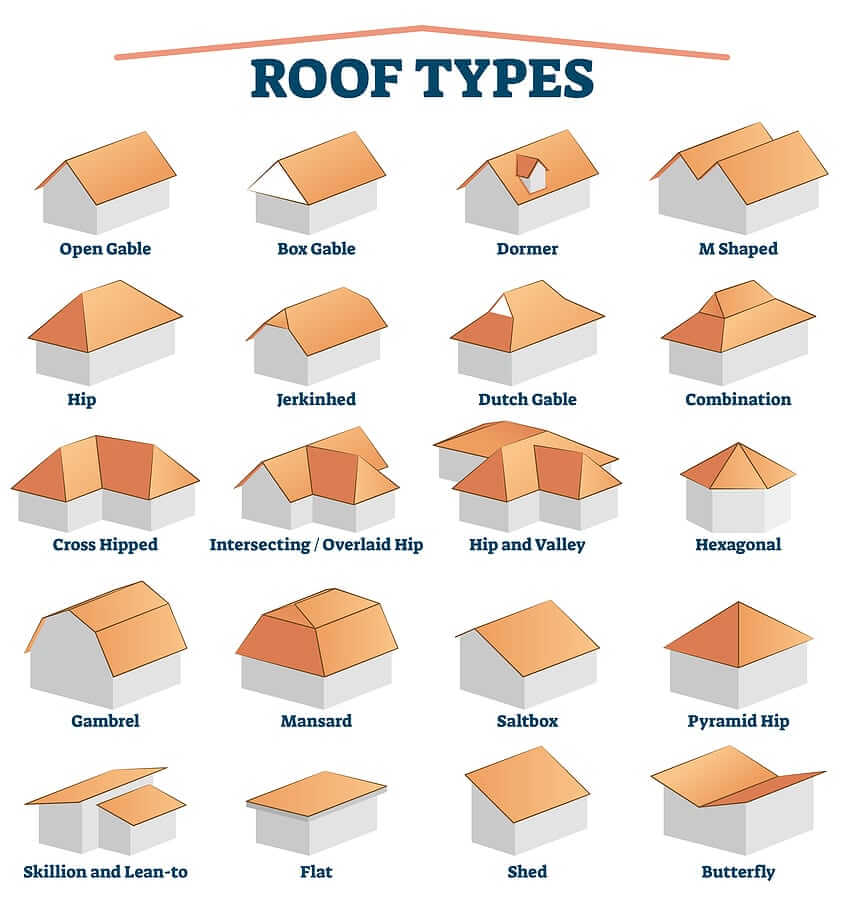
Photo Source: Roofline.com.au
Let us help you understand the various Australian Roof Types better with a breakdown of 10 most popular types, along with their advantages and disadvantages:

Photo Source: Decoist.com
1. Gable Roof:
The classic “house” shape, the gable roof is a popular choice for a reason.
- Pros: Classic design, good for ventilation and drainage, allows for attic space.
- Cons: Not ideal for high-wind zones, requires more materials compared to simpler designs.
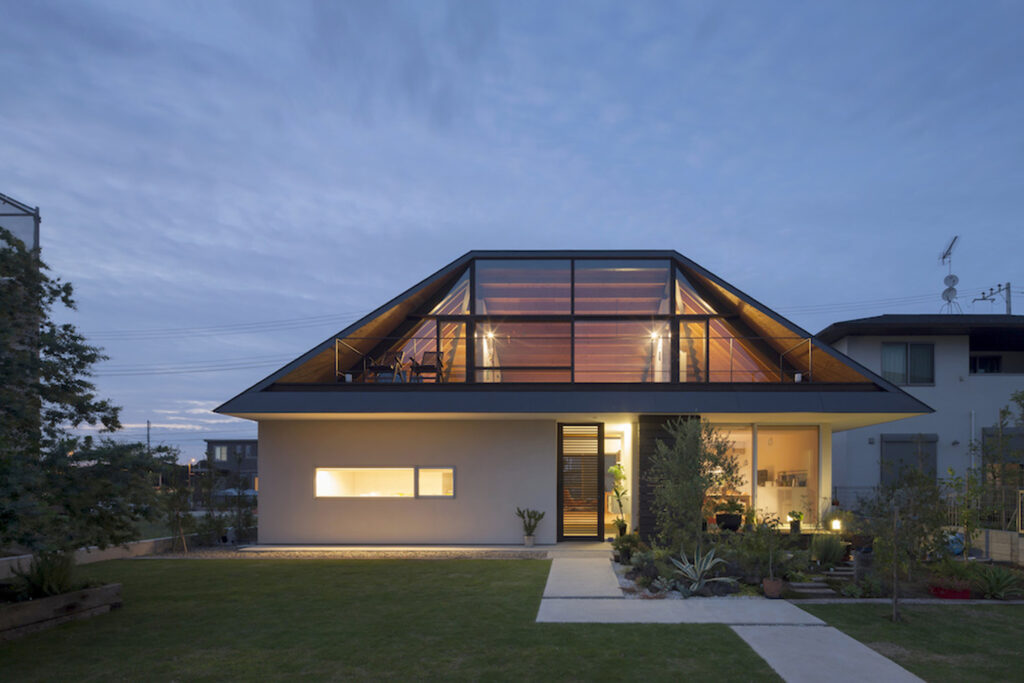
Photo Source: Arch Daily
2. Hip Roof:
Featuring four sloping sides that meet at a ridge, hip roofs offer excellent stability.
- Pros: Very stable in high winds and snowfall, sheds water efficiently from all sides.
- Cons: More complex design and construction, can be more expensive than gable roofs, less attic space.
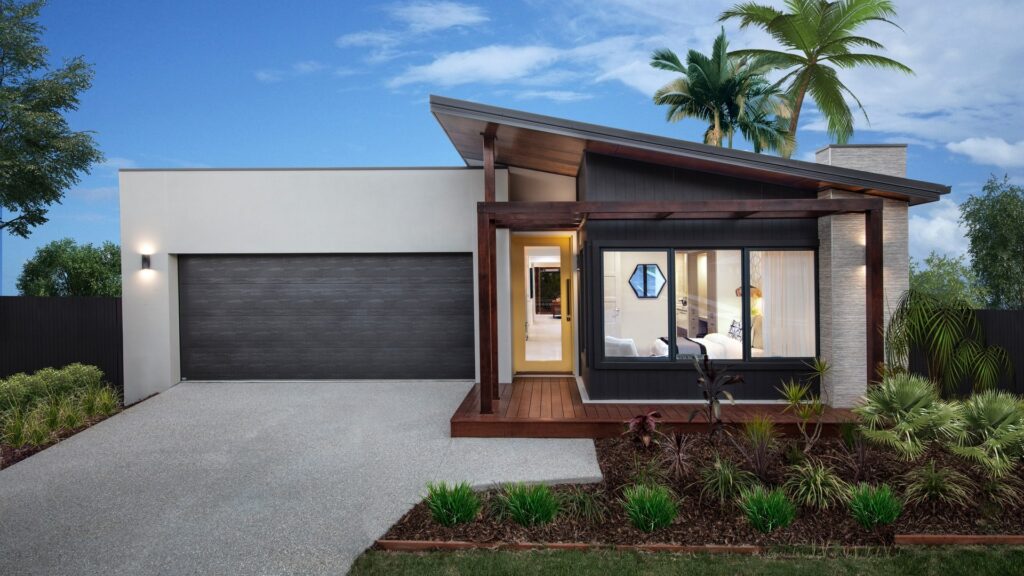
Photo Source: BrightonHomes
3. Skillion Roof:
A simple, sloping roof perfect for modern homes and extensions to maximise space.
- Pros: Simple and affordable design, easy to install and maintain, good for modern aesthetics.
- Cons: Limited headroom and attic space, may not be suitable for high rainfall areas.
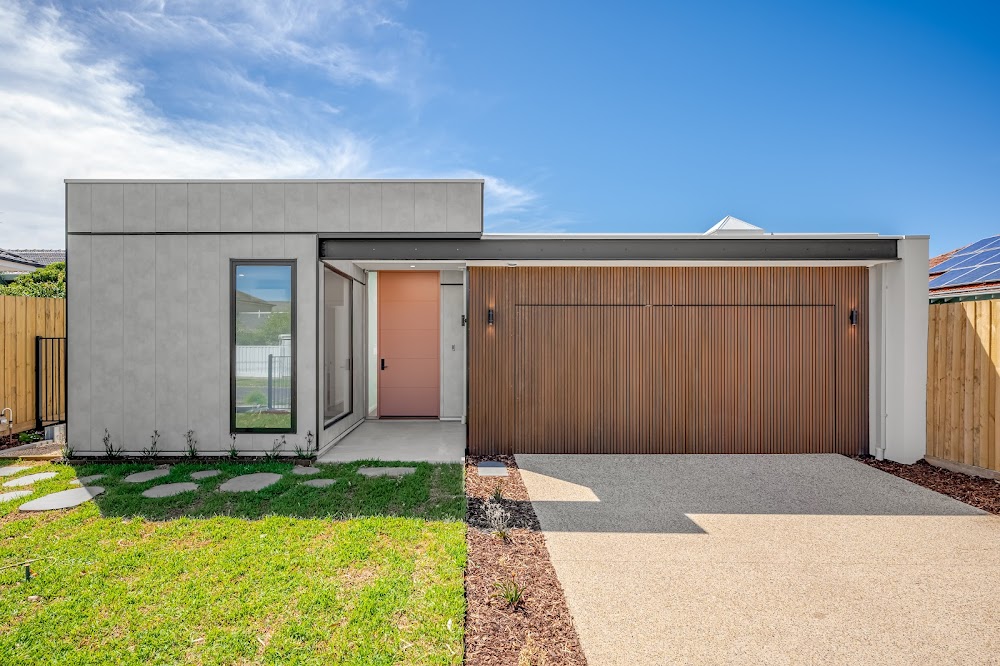
4. Flat Roof:
Flat roofs are a common choice for commercial buildings and contemporary homes.
- Pros: Ideal for rooftop gardens or solar panels, provides a clean, modern look.
- Cons: Requires precise waterproofing, prone to ponding water, limited ventilation.
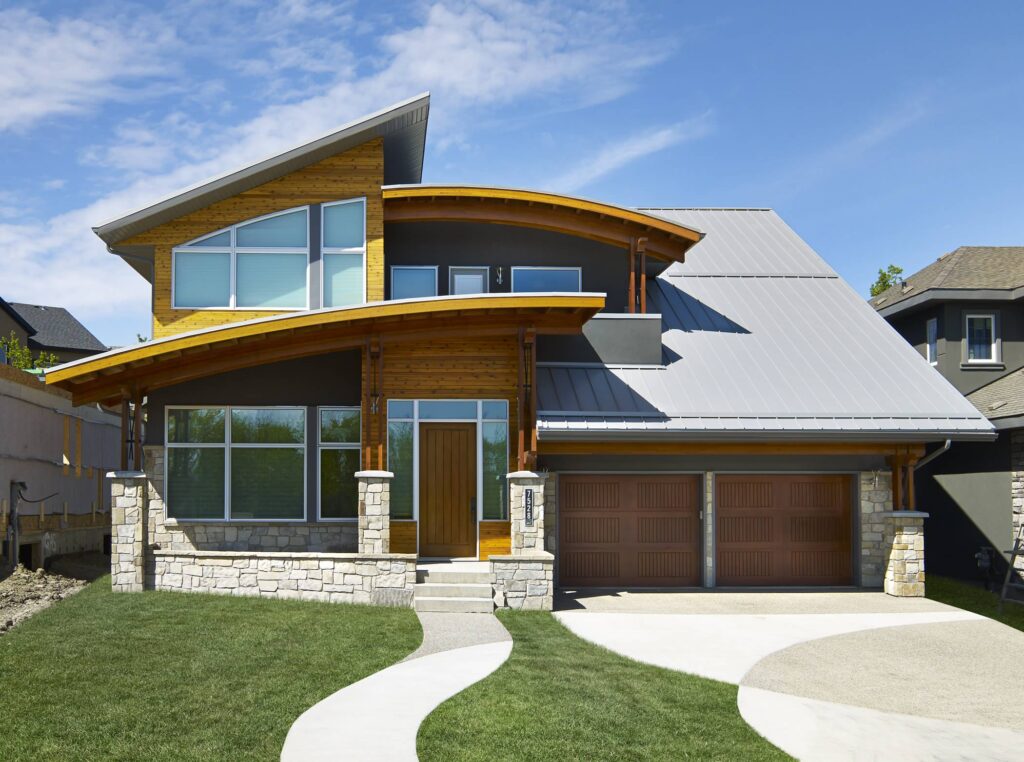
Photo Source: Houzz
5. Curved Roof:
Adding a touch of elegance and architectural interest, curved roofs can be a real head-turner.
- Pros: Creates a unique and stylish aesthetic, good for capturing rainwater.
- Cons: More complex design and construction, can be expensive, may require specialised materials.
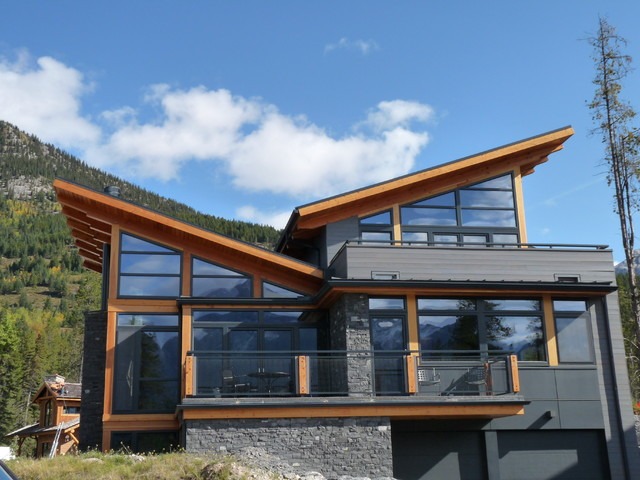
Photo Source: Houzz
6. Butterfly Roof:
Featuring two opposing sloping sections that drain inwards, butterfly roofs offer a unique aesthetic for the modern homeowner.
- Pros: Provides good drainage and natural light, can be visually striking.
- Cons: Not suitable for all climates, may require additional support structures.
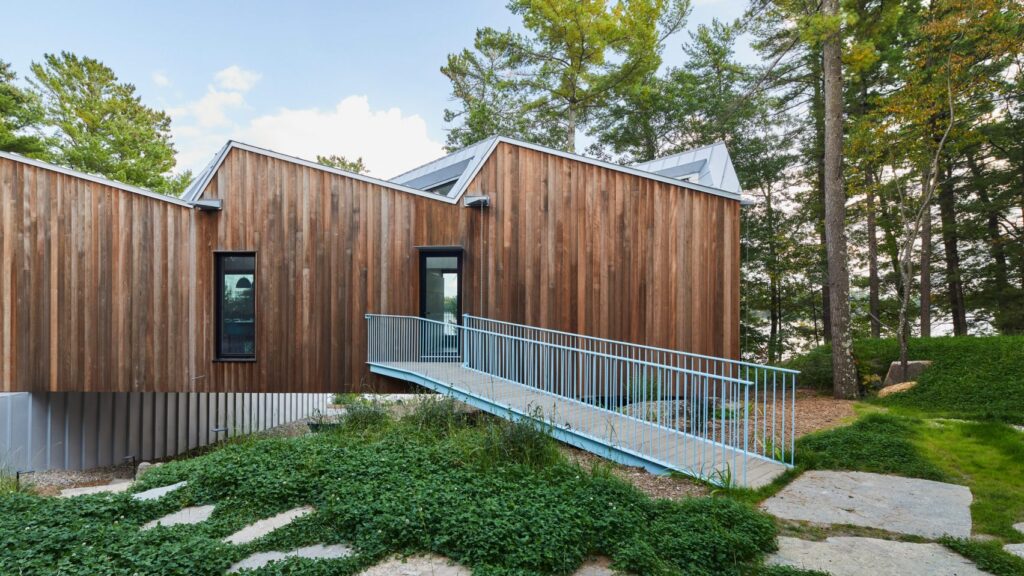
Photo Source: DeZeen.com
7. Sawtooth Roof:
A series of sloping sections that resemble saw teeth, these roofs are often used in industrial buildings, but increasing in popularity for residential buildings.
- Pros: Maximises natural light in industrial buildings, efficient for ventilation.
- Cons: Not commonly used for residential buildings, can be complex to design and build.
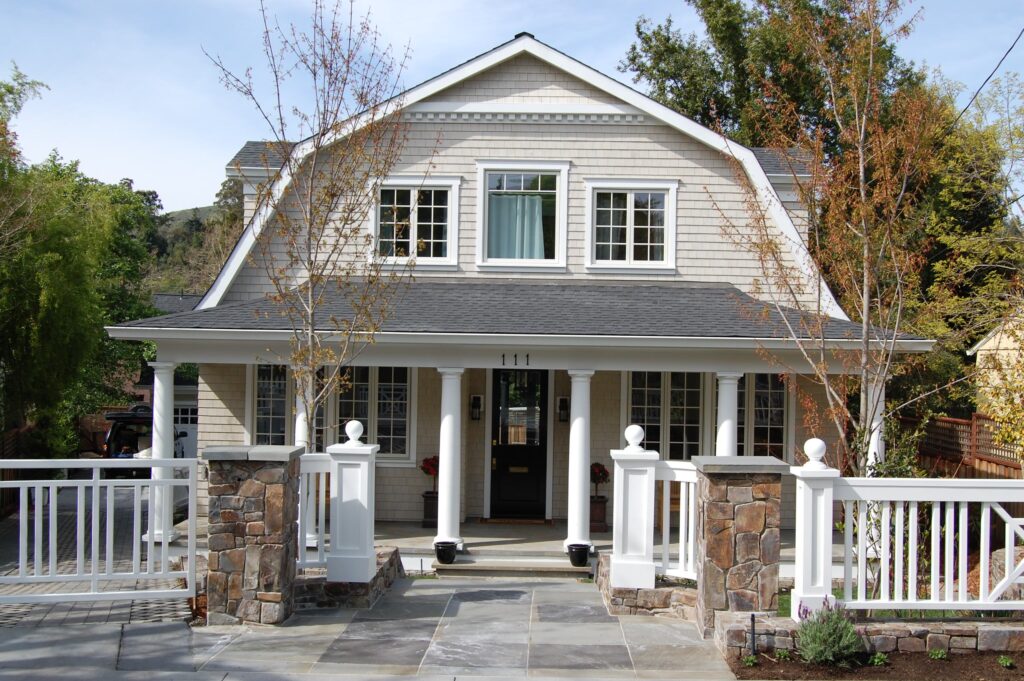
Photo Source: Houzz
8. Gambrel Roof:
Features a double slope on each side, with a steeper lower section and a gentler upper section.
- Pros: Provides additional headroom and storage space in the attic, distinctive Dutch colonial aesthetic.
- Cons: More complex construction compared to gable roofs, may require additional framing.
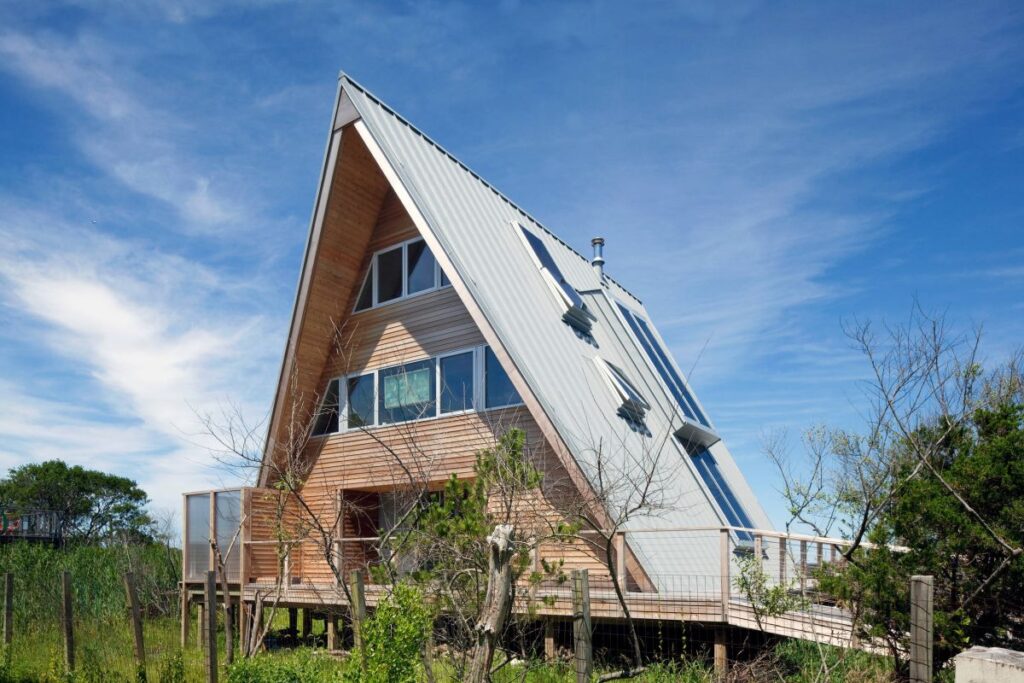
Photo Source: Homedit
9. A-Frame Roof:
A simple triangular roof shape often seen in cabins and chalets, A-frame roofs are easy and affordable to construct.
- Pros: Simple and affordable for cabins or sheds, provides good drainage in high-snowfall areas.
- Cons: Limited headroom and interior space, not suitable for all architectural styles.
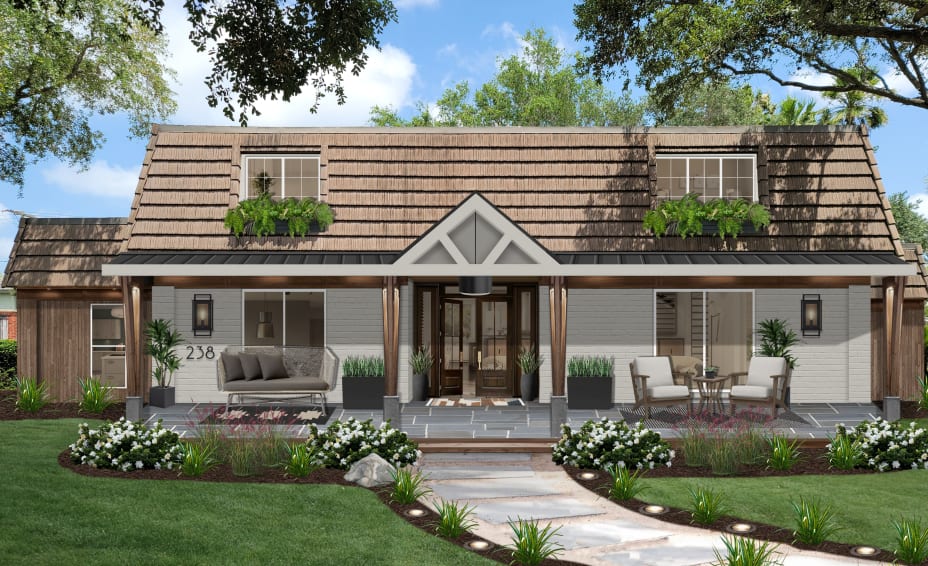
Photo Source: brick&batten
10. Mansard Roof:
A distinctive European aesthetic with four sloping sides, featuring a steeper lower section and a flatter upper section.
- Pros: Offers additional living space in the attic.
- Cons: Complex and expensive to construct, may not be suitable for all Australian climates.
All in all, the ideal roof for your home depends on various factors, including local climate, your preferred building style and aesthetics, budget, and desired functionality. Consider consulting with a licensed builder or architect to determine the optimal roof design for your specific needs.
—
At HouseSpec Builders, we are a small business run by a passionate and friendly team with a combined experience of over 60 years of experience in homebuilding. We are 5-star rated on Google as a trusted, reliable home builder in Melbourne and we pride ourselves on delivering personal service to meet your home building needs.
Looking to rebuild on land with an existing property? Read our previous article to learn more about How Much a Knock Down Rebuild Costs in Melbourne.
Get in touch with us today!
